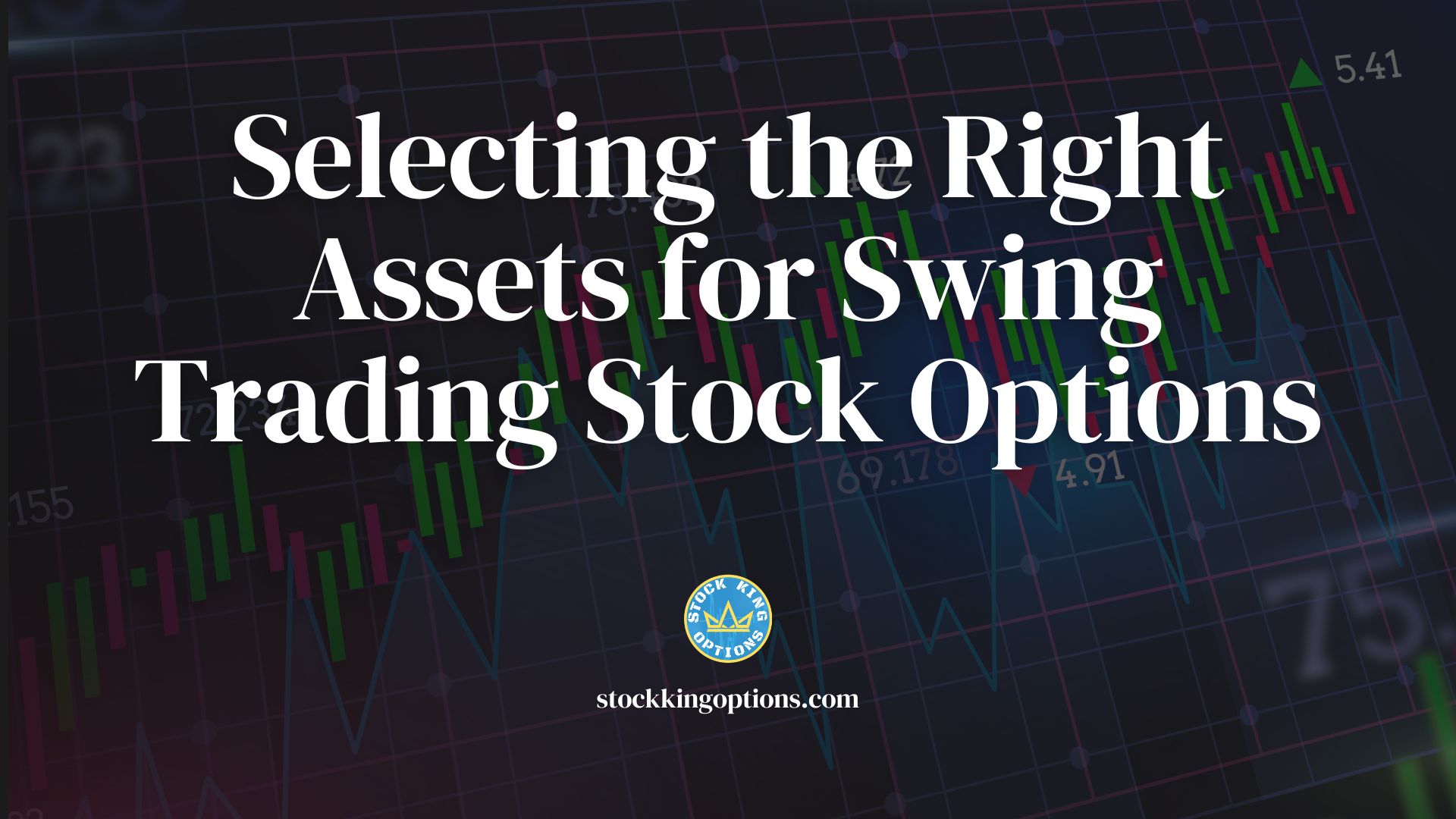
Key Takeaways:
– Choosing the right assets is crucial for successful swing trading options.
– Understanding asset selection enhances profitability and risk management.
– Proper analysis and research are essential for identifying suitable assets.
Featured Snippet:
Question: How important is selecting the right assets in swing trading options?
Answer: Selecting the right assets is paramount in swing trading options as it directly impacts profitability and risk management.
Introduction:
In the realm of swing trading options, success hinges on selecting the right assets. This article delves into the critical importance of asset selection and provides actionable insights into how to choose assets effectively. From maximizing profitability to managing risk, the process of selecting the right assets is fundamental to achieving success in swing trading options.
Equity Selection
Equity selection is a crucial aspect of swing trading options as it determines the potential profitability of your trades. It involves carefully selecting assets that have the potential to provide high returns within a short period of time. In this section, we will discuss the key factors to consider when choosing equities for swing trading options.
The first factor to consider is market trends and conditions. It is essential to select equities that are in an uptrend or have positive momentum as these tend to perform well in swing trading. This can be determined by analyzing price trends, moving averages, and other technical indicators. Additionally, keeping an eye on overall market conditions and sentiment can also help you identify potential opportunities.
Another important consideration is the liquidity of the equity. Liquidity refers to how easily an asset can be bought or sold without causing significant price fluctuations. Swing traders should focus on highly liquid stocks with high trading volume as they allow for quick entry and exit from trades.
It is also crucial to research the fundamentals of the company behind the equity before making any investment decisions. This includes analyzing financial statements, earnings reports, and overall industry performance. A strong fundamental analysis can help you identify undervalued stocks with strong potential for growth in a short period.
Additionally, it is essential to consider volatility when selecting equities for swing trading options. Volatility refers to how much an asset’s price fluctuates over time and can greatly impact your risk-reward ratio. High volatility equities may offer higher potential returns but also come with greater risks, while low volatility stocks may offer limited profits but also have lower risks.
Furthermore, conducting thorough technical analysis plays a vital role in equity selection for swing trading options. This involves studying charts and using various technical indicators such as support and resistance levels, candlestick patterns, and trend lines to identify entry and exit points.
Diversification is key when selecting equities for swing trading options. It is recommended not to put all your eggs in one basket and instead choose a mix of high- and low-risk equities to create a balanced portfolio. This not only helps mitigate risks but also allows for potential gains from different market trends.
Equity selection requires a combination of technical and fundamental analysis, as well as an understanding of market conditions and risk management. By carefully considering these factors, you can increase the chances of success in swing trading options and achieve your desired investment goals.
Options Selection
Options Selection is an important aspect of swing trading, as it involves carefully selecting the right assets to trade and timing their entry and exit points to maximize profit potential. In this section, we will discuss the key factors to consider when selecting options for swing trading.
One of the first things to consider when selecting options is the underlying assets. These can include stocks, currencies, commodities or indices. It’s essential to choose assets with high liquidity and volatility as these are more likely to have significant price movements, providing better opportunities for profits.
Next, determine your risk tolerance level. Options can offer a range of risk levels depending on their strike price and expiration date. Higher-risk options may have a lower premium but also have a higher likelihood of expiring worthless. On the other hand, lower-risk options with longer expiration dates may require a larger investment but also provide more time for market fluctuations to work in your favor.
Another crucial factor in options selection is understanding implied volatility (IV). IV is an estimation of how much an asset’s price will fluctuate over time based on market expectations. For swing traders seeking short-term gains, IV plays an integral role in determining which options will provide the most profitable opportunities.
In addition to implied volatility, Greeks are also vital considerations for option selection. The Greeks measure certain risks associated with options contracts and include Delta (price sensitivity), Gamma (rate of change), Theta (time decay) and Vega (volatility sensitivity). It’s essential to understand how each Greek impacts your chosen option’s value before entering into any trades.
Moreover, it’s crucial to evaluate technical analysis indicators when selecting options for swing trading. Technical analysis involves studying historical data such as price patterns, trends, support/resistance levels and volume to identify potential entry/exit points for trades. Incorporating technical analysis into your option selection process can help increase profitability by efficiently timing your entries and exits.
Do not forget about diversification when selecting options for swing trading. Diversification is the practice of spreading out your investments across different asset classes to reduce risk. By diversifying your option trades across a variety of assets, you can mitigate risk and protect your overall investment portfolio.
When selecting options for swing trading, consider factors such as underlying assets, risk tolerance, implied volatility, Greeks, technical analysis and diversification. By carefully evaluating these elements and making informed decisions, you can increase the potential for profitable trades in the dynamic world of options trading.
ETFs and Index Funds
Exchange-traded funds (ETFs) and index funds are two popular investment vehicles that fall under the category of passive investments. These types of assets are typically favored by swing traders due to their low cost, diversification benefits, and potential for short and long-term growth.
ETFs and index funds track a specific market index or sector, allowing investors to gain exposure to a vast range of stocks with just one purchase. Both assets have similar features but differ in some critical aspects.
An ETF is a fund that holds a basket of securities such as stocks, bonds, commodities, or currencies and trades on an exchange like individual stock shares. It mirrors the performance of an underlying index, making it easier for investors to gain diversified exposure at a lower cost compared to buying individual stocks. Additionally, ETFs offer flexibility as they can be bought and sold throughout the day at market prices.
On the other hand, index funds are mutual funds that aim to replicate the performance of an underlying benchmark such as the S&P 500 or Dow Jones Industrial Average. Index funds typically have more significant upfront fees than ETFs but offer lower ongoing expense ratios. They also allow fractional trading, meaning investors can buy in small amounts instead of needing to purchase full shares like traditional stocks.
One crucial factor that differentiates these two assets is their management style. ETFs are actively managed by investment professionals who constantly monitor the fund’s holdings and make changes accordingly. In contrast, index funds operate passively by tracking a specific benchmark without any active management. This difference results in different risk levels for each asset type; while actively managed ETFs may offer higher returns, they also tend to carry slightly more risk compared to passively managed index funds.
When considering ETFs and index funds for swing trading options, it’s important to look beyond just their basic features – factors such as liquidity levels, expense ratios, past performance history should also be carefully evaluated before making any investment decisions.
ETFs and index funds can be valuable assets for swing traders looking to diversify their portfolio with minimal effort and cost. Ultimately, the best option will depend on an individual’s investment goals, risk tolerance, and overall strategy. It’s always advisable to seek professional guidance before making any significant investment decisions.




